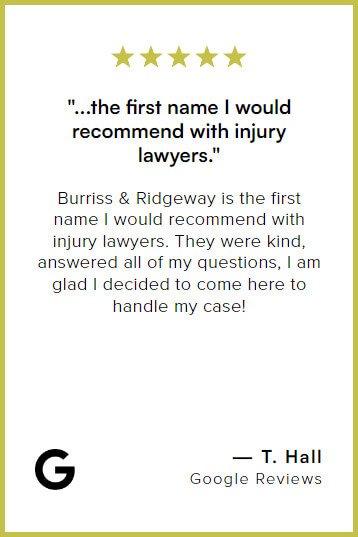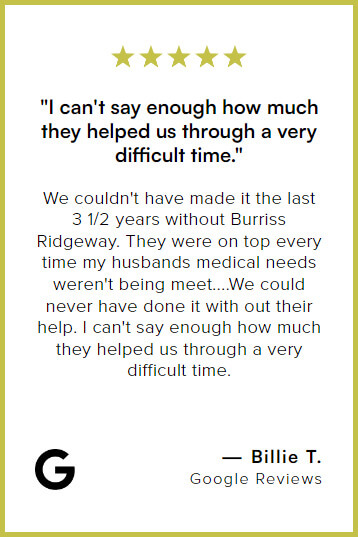Many South Carolina cities, such as Charleston and Columbia, have been implementing traffic cameras at intersections to enforce traffic regulations on drivers who might otherwise speed through a red light. While the intent might be valid, data suggests that the new measures may be counterproductive.
When drivers are concerned about getting a ticket from a red-light camera, they tend to stop short at intersections, even at yellow lights. This can cause rear-end collisions, a frequent source of crash injuries where fault is difficult to determine.
If you were recently injured in a rear-end collision at an intersection, we urge you to reach out to one of the dedicated South Carolina car accident attorneys at Burriss Ridgeway Injury Lawyers. When you place your first call to our offices today at (803) 451-4000, you can obtain a free initial case evaluation to help you determine how best to get the compensation you deserve.
Why Do Cities Use Intersection Traffic Cameras?
More than 400 cities within the United States, including over 60% of the 50 largest cities, use electronic monitoring systems to help enforce traffic regulations at intersections. The governments that implemented these measures mainly claimed that the use of these devices aimed to cut down on the rate of speeding and traffic light violations.
This is certainly an issue, as accidents are nearly three times as likely to occur within 200 feet of an intersection than anywhere else on the road. A pamphlet created by the Federal Department of Transportation also suggests that accidents caused by the running of red lights result in higher rates of injury than any other type of crash. This is true even at speeds of 30 miles per hour or below, as the angled impact that these collisions often create is particularly harmful to drivers and passengers on the side where the impact occurs.
Clearly, the issue exists, which means lawmakers are tasked with passing measures to deal with it. However, it is reasonable to suggest that legislators were also motivated by the additional revenue gained from the systems’ ability to detect traffic violations and issue citations. Intersection cameras are automated and do not require law enforcement presence, making them a monetary asset for state and local governments.
Statistics Show that Intersection Traffic Cameras May Cause More Accidents
Regardless of the true motivation behind the measures, their use would be acceptable if it helped prevent accidents, injuries, and deaths. However, comparisons between data collected at intersections with and without electronic monitoring systems show that their existence may do more harm than good.
A study published by online reader The Conversation showed that, while cameras did reduce the rate of drivers running red lights, they also had the effect of causing drivers who otherwise would have gone through a yellow light lawfully to stop short without warning, causing an increase in the number of rear-end collisions at intersections. Drivers who are unsure whether they will trigger a citation through the camera system may choose to put their safety in the hands of the driver behind them, who might not be expecting this obstacle to suddenly appear in their path.
In any accident, all parties in every vehicle involved could suffer serious injury. However, in most rear-end collisions, the driver in the rear is found to be at fault. A driver stopping short abruptly at an intersection creates danger for the driver and passengers in the rear vehicle and makes it less likely that they will be able to recover compensation through a lawsuit, as courts tend to find against these parties.
How to Get Compensation After a Car Accident at a Red Light in South Carolina
If you were involved in a rear-end collision at an intersection, you might be able to file a lawsuit to recover damages for your injuries. South Carolina is an at-fault car insurance state, meaning that the party that caused the accident (or, more accurately, their insurer) is ultimately responsible for paying the other injury victims’ compensation. This is why it is so important to establish who was in the wrong in your car accident.
The process of demonstrating fault starts with calling 911 at the scene of the accident. In South Carolina, officers who arrive at the scene of an accident that causes death, bodily injury, or a significant amount of property damage are required by law to investigate the accident and compile an official crash report. This report will contain details about how the accident occurred and whether there were any traffic violations or other negative driving practices involved.
If you were the driver of the rear vehicle in a rear-end collision, the odds are stacked against you, as fault is generally assigned to the rear driver in these situations. However, the other driver may have contributed to causing the accident through their own negligence. For instance, if a driver stopped abruptly at an intersection, they may not have given the rear driver enough time to react.
It will be difficult to prove your case without the help of a seasoned Sumter car accident lawyer. While you do not technically need legal representation to file an insurance claim or lawsuit against another driver for car accident injuries, having it can serve multiple purposes. Your Sumter car accident lawyer can handle communications with the insurance company representatives so that you don’t accidentally make statements against your own interest. Your lawyer can also help you estimate damages in your case so that you know what your claim is worth. You may also find legal representation to be a source of relief that can handle the complex nature of litigation while you deal with your physical recovery.
Get a Free Initial Case Assessment from a South Carolina Car Accident Lawyer Today
To find out more about the services offered at Burriss Ridgeway Injury Lawyers, call us today at (803) 451-4000 to receive a first-time case evaluation for free.






